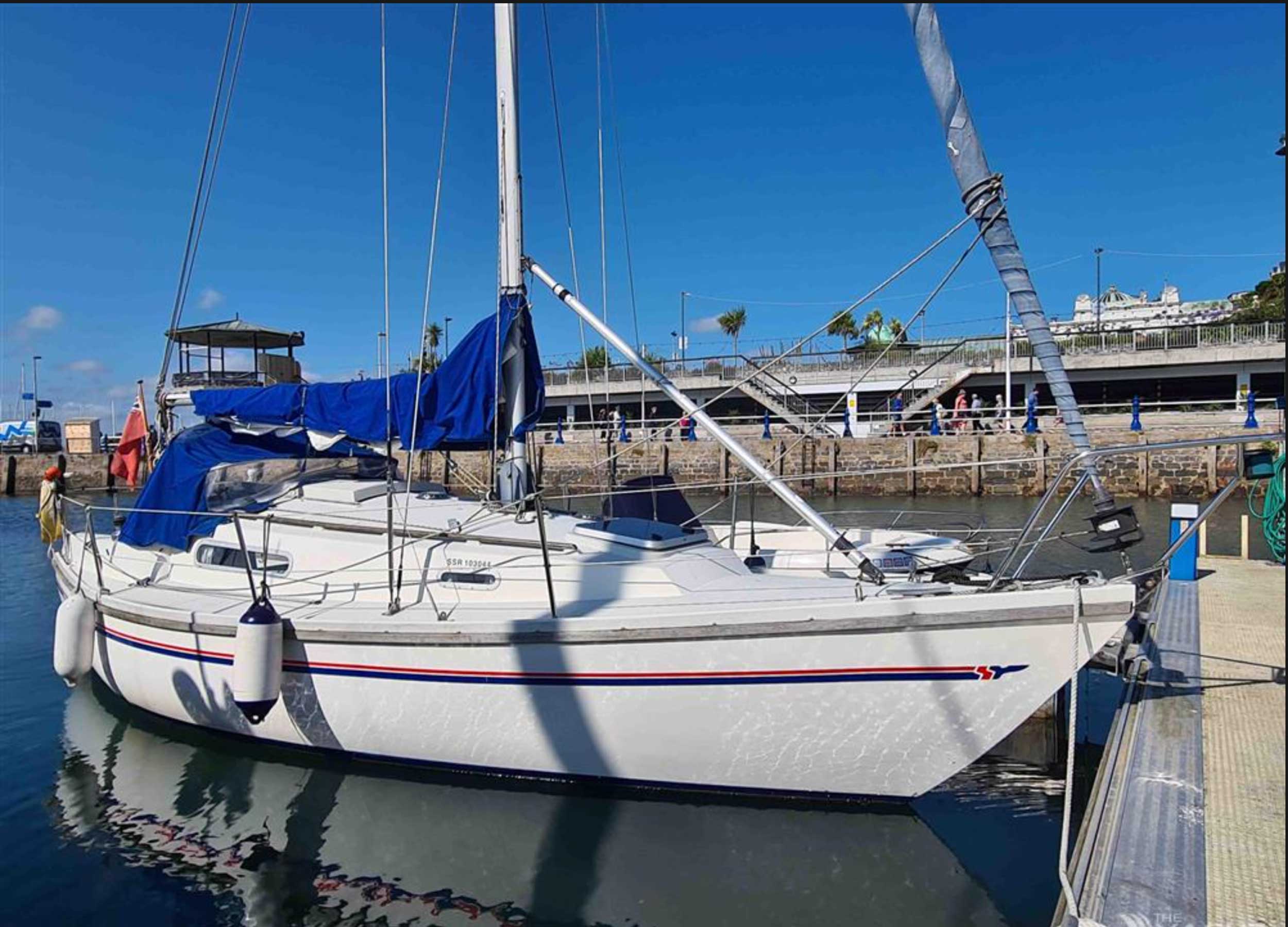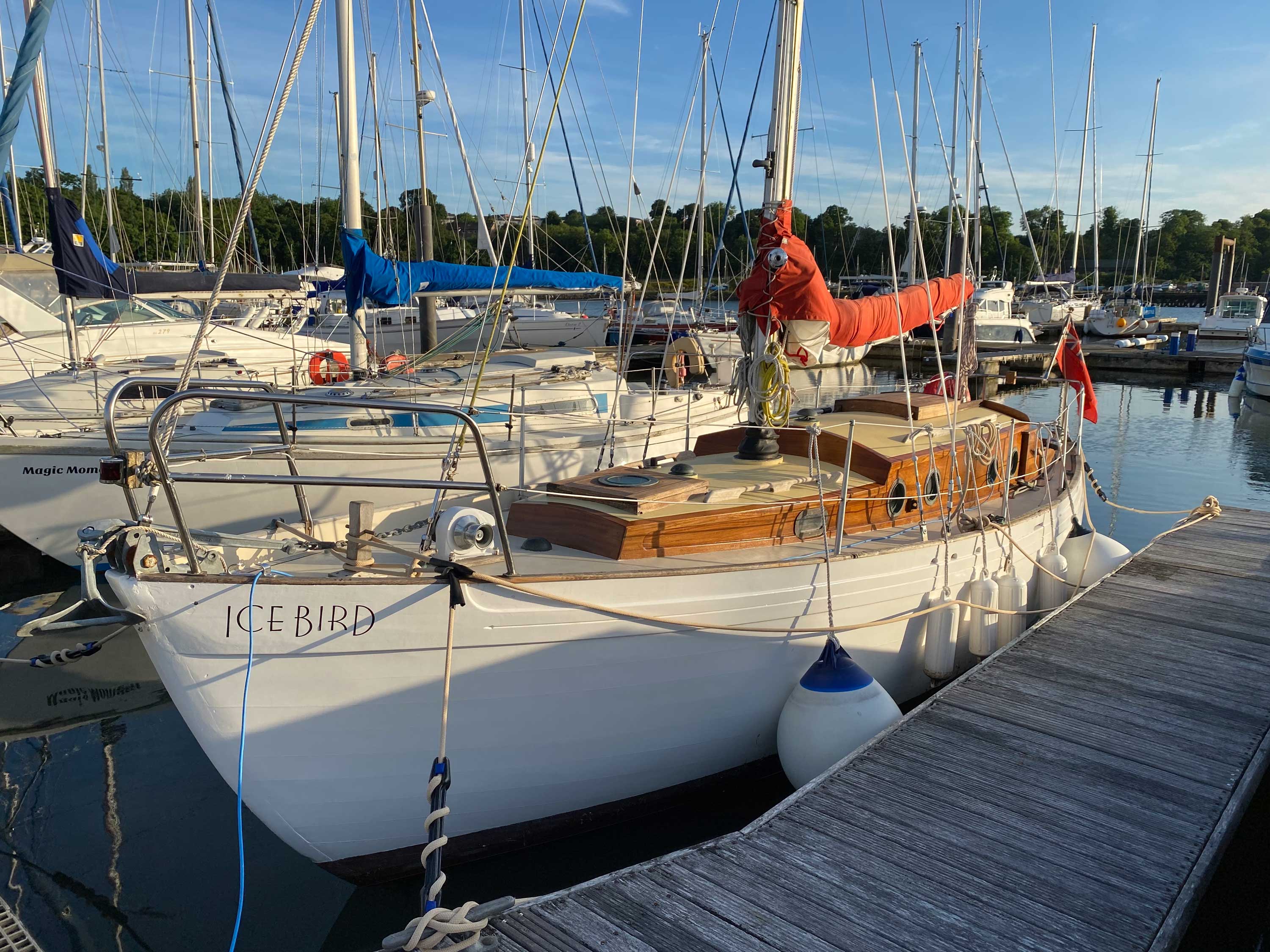“DO NOT BUY A WOODEN BOAT!” That was the stark warning from a lifelong mate with much more sailing experience than me.
“Have you ever tried reversing a long keel yacht in a marina?” was his next caustic comment. “You just never know which way the stern is going to kick out – and the rudder position has nothing to do with it.”
Keith, now living in New Zealand on the coast and in boats whenever possible, was replying to my email identifying a lovely wooden yacht for sale not far from me. It was a 28ft Holman Sterling, designed by Kim Holman and built by his brother in Brixham, Devon, again not far away.
The Holman Sterling looked really classic, with lovely swooping lines and was nicely fitted out, with a reconditioned engine, and relatively new sails and rigging. Perfect for me, or so I thought.
Not so Keith. “You’ll spend more time and money maintaining it than sailing it,” was his final direct hit.
Plastic boat it is then. Not a classic with timeless design and constructed from sustainable materials. Not right now, anyway. I need to spend time sailing and building experience rather than scarfing in new hull straps or caulking between planks.
One of my favourite sailing columnists, Dave Selby, regularly writes about how it’s important to buy a boat that a) you can sail confidently by yourself and b) how there are hundreds of inexpensive GRP yachts out there going for a fraction of their original price. They may be a bit tired and need a bit of TLC but, with a rew exceptions, have years of sailing pleasure still to give.

He’s right, of course. One of my ‘target’ boats is a Sadler 25 or the later 26. Sadler yachts are renowned for being well-designed, capable of single-handed sailing, and, very appealing to me, being unsinkable due to the hull’s foam core providing lots of natural buoyancy.
I’ve looked at two now, one a 25 priced at just under £6k and a 26 at £10k. Both fitted the description ‘tired’ but not as far gone as ‘knackered’. Both well-equipped but with much of the rigging and other regularly used kit needing TLC or replacement. Both with engine bays that said, “Why bother looking after the engine when it’s a sail boat?”
But I know what I’m like. I can’t stand 60% OK. It has to be 98% great (there’s always a tiny element that isn’t perfect even on brand new boats/cars/motorcycles/aeroplanes). That means I’ll end up spending hundreds if not thousands on the fixer-upper to bring it to an acceptable standard.
Someone joked recently that B.O.A.T. stands for ‘break out another thousand’ so expensive are repairs. That chimes with another activity I’m involved, flying, where pilots and aircraft owners joke about ‘aviation pounds’, ie £1 in aviation currency is equal to £1,000 normal money. Surely boats can’t be as expensive to run as a light aircraft? Turns out they can…
All this is pushing me towards a slightly more expensive boat where less immediate work is required. There is a limit on budget of course but there’s one test that will determine success or failure. It’s the same test that applies to visiting a new marina, harbour or airfield clubhouse come to that. It’s the Ladies Loo Test. Yes, if the Ladies Loo is deemed acceptable then a really important part of the exercise is tracking the right heading.
So, that original £8k budget has been raised to £12k which means it’s really £14k or, in an exceptional case where the heart really is ruling the head, £15k. So, £18k it is then.
Now, there are some exceptional boats around this price including this beautiful 1952 Laurent Giles Vertue V45, on sale with Dartmouth broker Wooden Ships at £17,500. Yes, it’s wood, it’s a classic, with provenance and a great back story. Keith’s gonna love it.

